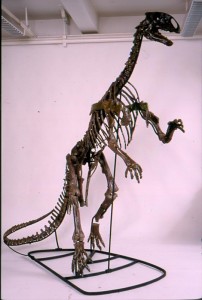SpotOn London was held this weekend at the Wellcome Trust, shockingly, in London. The name stands for Science Policy, Outreach and Tools Online, with each of these representing three individual but strongly interwoven strands during the two days. As far as conferences go, it was pretty interactive. Each session was live-streamed, and through that and the power of Twitter –many people in each session either had an ipad, laptop, or mobile phone out tracking the online conversation, and drawing in additional comments from those who couldn’t be there in person.
It was also nice to briefly meet Barbara and Edvard of the EGU network (*waves at*). Apart from the small geo-cadre, the rest of the delegates represented in total the entire scientific discipline, from PhD students to BBC science reporters, communications managers, and those who work in science policy. When you consider science as being an interactive process, pretty much everyone present can be classed as some brand of scientist, representing the huge social range of the field. That’s intended as a compliment to any attendees who read this!
So, why as a PhD student and palaeontologist, did I go to this conference? The primary reason is that I was actually invited to co-co-ordinate a session with Michelle Brook, the Head of Policy at the Physiological Society. As well as this, the ‘science communication network’, consisting rather loosely of those who do various outreach initiatives, work in science policy, reporting, editing, publishing, are an insanely valuable resource for personal development as an early career scientist. I only ‘joined’, or became aware of, this community around a year ago, and since then have begun to learn about issues such as gender bias in science, the open access movement, the role of science in government, the role of learned societies, as well as the value of blogging, and various other forms of communication, among other things. This has largely been fueled by being pretty active on Twitter, which is a pretty awesome way of staying in touch with the world beyond the desk/lab, and made a whole lot easier by living in London, which is undoubtedly the UK’s hub of science communication-relevant events, people, and organisations (ranging from CaSE to BioMed Central’s publishing house, and everything in between).
So yeah, the session. We decided to strike for the pretty hot topic of increasing engagement between scientists and policymakers. The panel consisted of Nic Bilham, Head of External Relations and Strategy at the Geological Society (and my old boss, who taught me everything I know about geoscience policy), Julian Huppert, the MP for Cambridge, and strong supporter of science within government, and Anna Zecharia, a post-doc at Imperial College, Head of the Science Communication Forum there, and someone with pretty big ideas for science communication and policy in the future. Michelle chaired the session. You can see their discussion here:
As well as this, we also organised a workshop to follow on from this discussion. If you want to see what any of this was like on Twitter, check out the #solo12sp hash tag. The video feed for this session was a bit fuzzy, seeing as how we had several discussions happening at the same time, based on the format idea of a ‘marketplace of discussion’, with the three panelists fueling debate and conversation by acting as focal areas of expertise. The idea is to take the notes and ideas made during this session, and collate them into some sort of guide document that scientists and policymakers can use to increase reciprocal engagement between the two. That’s not to say the two ‘sides’ are mutually distinct, and that interaction doesn’t happen already. It’s just that there could be more of it, and if some sort of strategic framework were established whereby communications between the two fields increased, for the benefit of both, then it would be mutually beneficial in terms of having more evidence-informed policies, where needed, and more policy-aware scientists. As far as how geology/geoscience fits in to this, I think, and I’m sure many would agree, that in times of issues such as climate change, energy security, natural hazards, radioactive waste, the more geoscientific input we have, the more informed we can be when it comes to tackling these. Where does palaeontology come in to all this? I’ll let you know when I’ve figured that one out.


